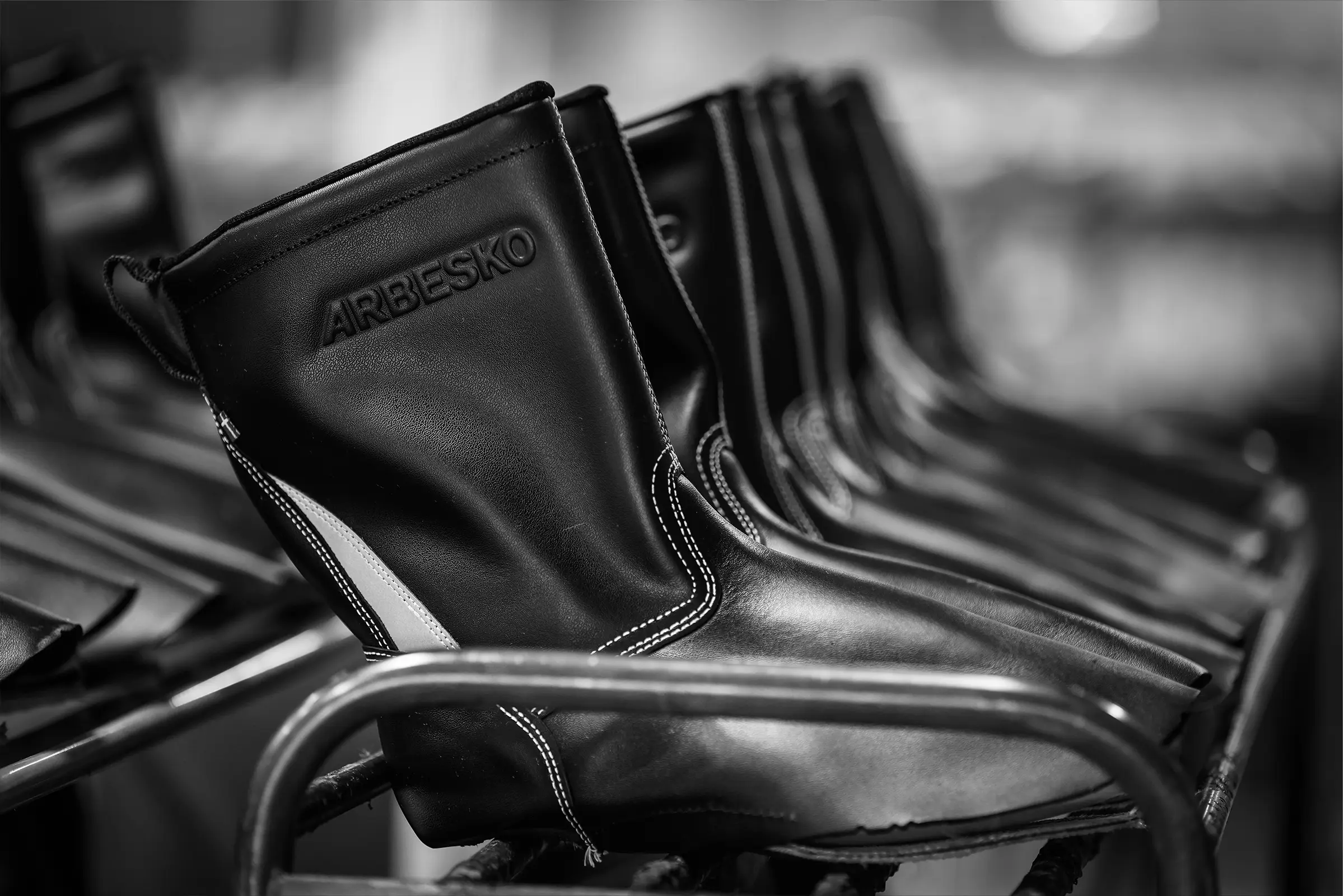Hållbarhet på Oksebra do Brasil
Ovandelarna till våra skor tillverkas i Brasilien av vårt dotterbolag Oksebra do Brasil, som vi ägt sedan 1995. Det är vår största underleverantör och vi ser det som en stor tillgång att vi äger denna del av leverantörskedjan. Det möjliggör för oss att ställa höga krav på miljö- och hållbarhetsfrågor.
Sedan 2021 drivs även Oksebra do Brasil i enlighet med internationella standarder för produktions-, miljö- och arbetsmiljökrav (ISO 9001, ISO 14001 och ISO 45001), och det pågår ett ständigt arbete med hållbarhetsrelaterade frågor, såsom arbete för minskad energiåtgång, materialutnyttjande, återvinning, arbetsmiljö och jämställdhet.
Förutom daglig kontakt besöks Oksebra do Brasil och Arbesko regelbundet av varandra för att lära och ha insyn i varandras verksamheter och tillsammans besöker vi intilliggande leverantörer.
På väg mot en helt fossilfri skoproduktionskedja
Från och med 2024 kommer brasilianska bolag i Oksebra do Brasils storlek att kunna teckna sig på helt fossilfria elavtal. I och med att den underleverantör som vi anlitar för viss sömnad redan driver sin fabrik med energi från solpaneler innebär det att vi från nästa år kommer driva hela sluttillverkningen av våra skor fossilfritt.
Elen som köps in idag till Oksebra do Brasil har den vanliga brasilianska landmixen, som ett vanligt år består av 80% förnybar energi från vatten, sol och vindkraft.
Liksom i vår svenska produktion finns det mål för Oksebra do Brasil att minska energianvändningen i produktionen.

Avfall och spill
Hela vår organisation lägger stor vikt vid att avfallsminimera, så även Oksebra do Brasil.
- 100% av allt avfall som uppstår hos Oksebra do Brasil källsorteras och tas om hand i återvinnande eller energiutvinnande processer, vilket innebär att inget avfall hamnar på deponi.
- 95% av alla fel som upptäcks i produktionen omarbetas i stället för att kasseras. Av de 5% som inte går att arbeta om tas alla felfria delar om hand och används i nya modeller.
- Mängden spill av läder och textil har minskat. Genom effektivare materialutnyttjande och färre textilvarianter har vi kunnat minska spillet med 15% från dessa två materialkategorier under de senaste åren

Cirkulär återanvändning av läderspill
Sedan 2009 har allt läderspill som uppstått hos Oksebra do Brasil skickats till en fabrik som utvinner gödningsmedel för ekologisk odling. Vi ser det som ett bidrag mot ett cirkulärt samhälle eftersom vårt spillmaterial kan komma till användning igen istället för att deponeras eller förbrännas.
Processen sker i stora tryckkokare med kontrollerade temperaturer. 1 kg kväve framställt på detta vis använder 50% mindre energi än vad som krävs för att framställa 1 kg konstgödsel. Produkten bidrar heller inte till övergödning eller läckage till grundvattnet eftersom det innehållande kvävet kommer ut i marken genom en långsam process, så att det som odlas kan ta upp hela mängden.




